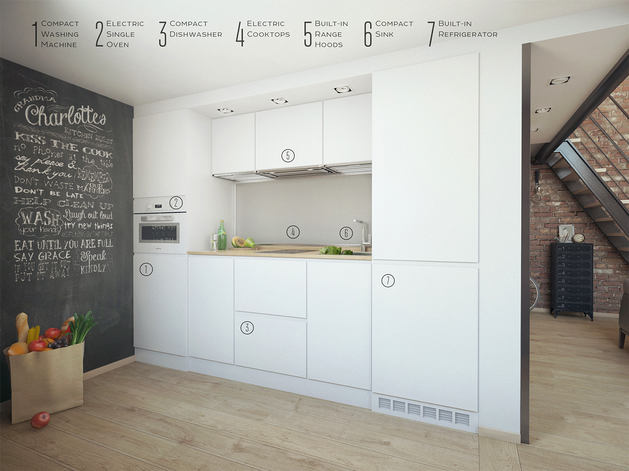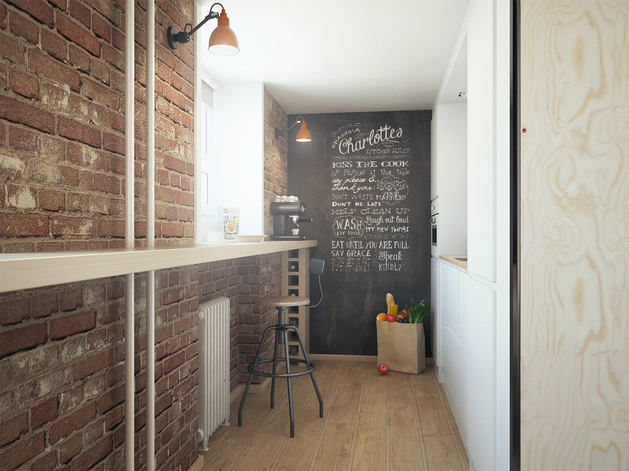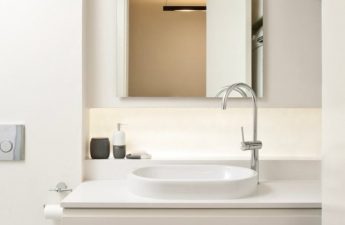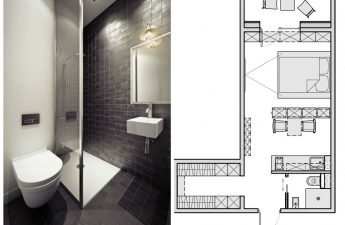Today we will tell you a story about howthe city printing house became a communal apartment, the communal apartment was replaced by offices, and in place of the offices a two-level loft appeared. Many ideas, unusual layout, ultimate functionality
The city center is primarily an area withlimited access for new buildings, which means that its architectural ensemble is dusted with the gray hairs of time. One of these old-timers of the historical part of Mariupol is a pre-revolutionary brick house. The two-story building, which survived several eras and dozens of uses, eventually became a haven for a functional, modern and maximally spacious for 35.7 square meters residential loft. Young ambitious Kharkovites from the design bureau The Goort Larisa Gusakova and Alexander Gusakov were responsible for the design of the apartment. Larisa Gusakova
Interior designer, co-founder of the design bureau TheGoort. One of those few "nuggets" who, thanks to self-education and talent, create unique projects, reaching a professional level and often surpassing their certified colleagues in the industry. thegoort.com
The owners of the premises were a young familya couple who boldly decided to reorganize a non-residential space into a cozy apartment in accordance with their lifestyle. He, a previously promising lawyer, preferred photography and running his own Internet projects to routine practice. She is a professional photo model.
Constant travel, long stays abroadon business matters prompted the guys to create a special place that can be called home, where you want to return, invite friends and loved ones. The main wishes were space and freedom, functionality of the space and a minimum of furniture - hence the characteristic design of the apartment.
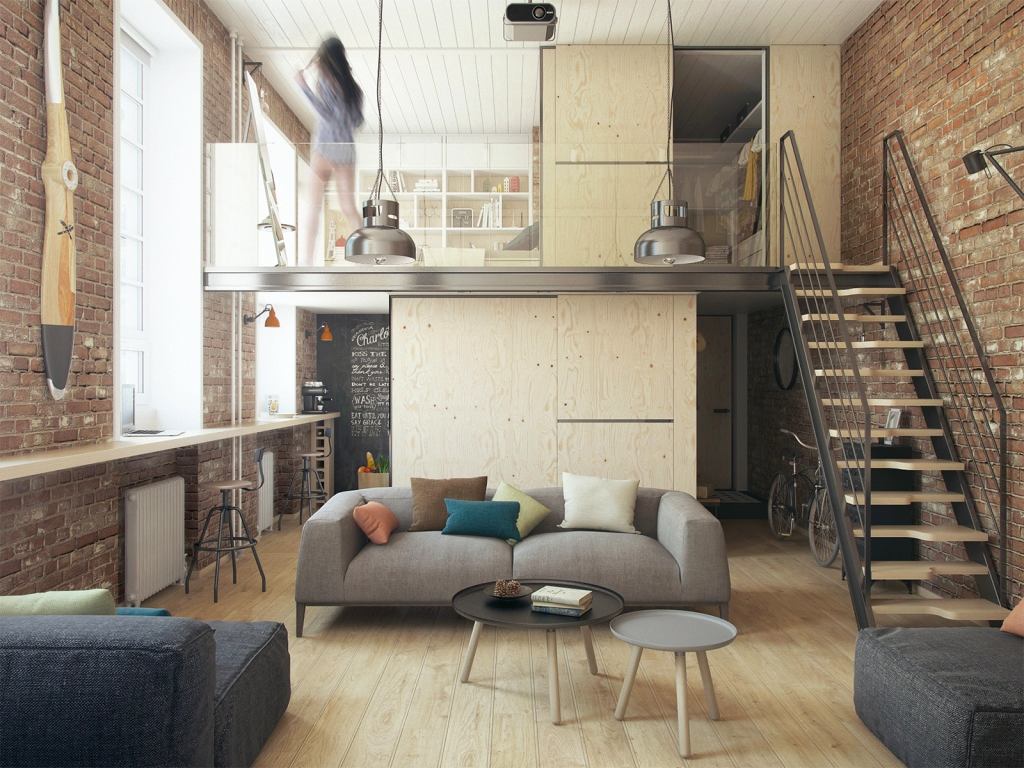 Larisa Gusakova, author of the project:— The project existed for a long time in words, in the form of some images and ideas, and the development stage took about six months. Trying out ideas and comparing them with the customer's wishes, we did not experience any particular disagreements due to the fact that we know each other well, since childhood, and, one can say, the object was created "as if for ourselves." thegoort.com
Larisa Gusakova, author of the project:— The project existed for a long time in words, in the form of some images and ideas, and the development stage took about six months. Trying out ideas and comparing them with the customer's wishes, we did not experience any particular disagreements due to the fact that we know each other well, since childhood, and, one can say, the object was created "as if for ourselves." thegoort.com
The difficulty of choice was which solutionapply to the volume of space - horizontal or vertical. The obvious advantage was the impressive four-meter ceilings - and so the second level of the apartment appeared. By additionally increasing the height of the ceilings by an average of 15 cm due to dismantling the old floor covering, we achieved equivalence between the lower and upper levels of the home.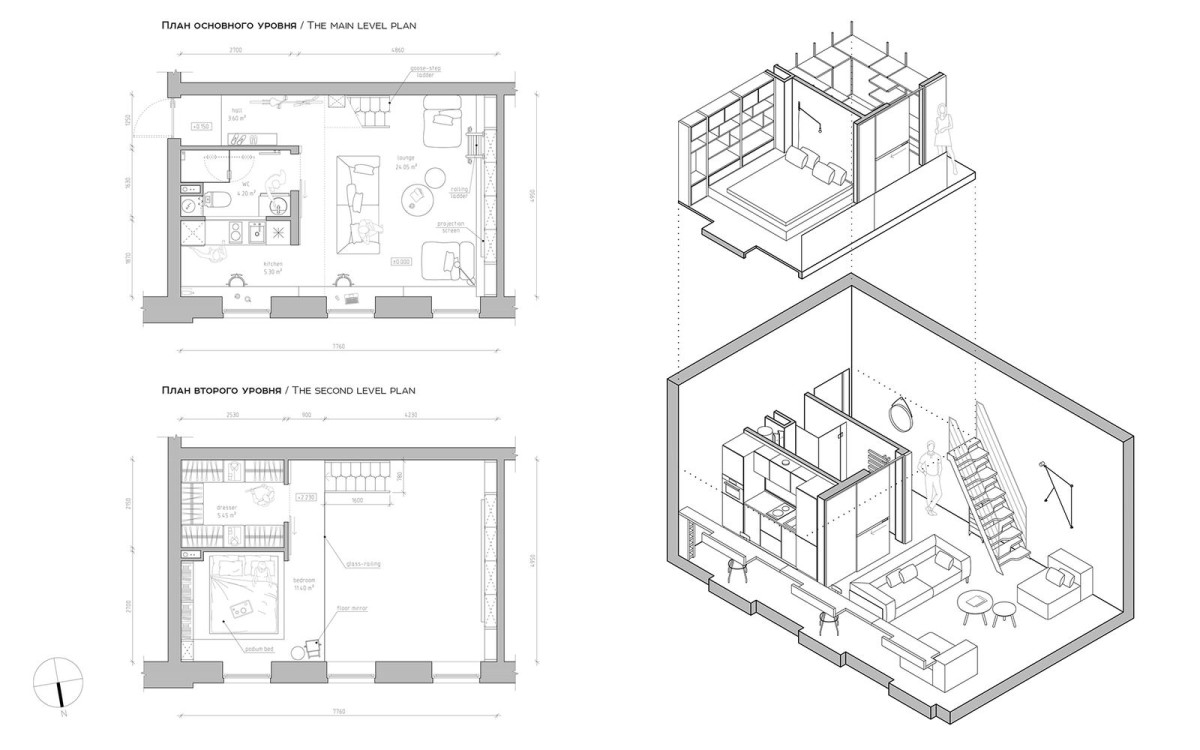
The lower level is - with the exception ofthe absence of a private area for the owners, the bedroom and dressing room were raised to a higher level. The levels are connected by a staircase, and the bedroom has turned into a full-fledged room due to the presence of natural light in it - one of the three high windows of the apartment is divided in half. In addition to the recreation area, the second "floor" contains a spacious dressing room for clothes, shoes and other things.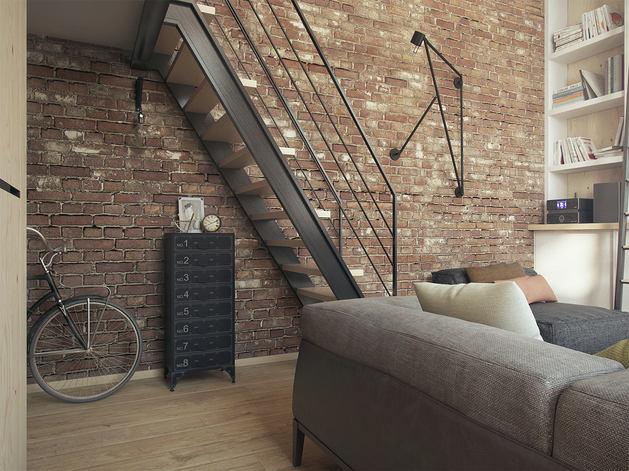
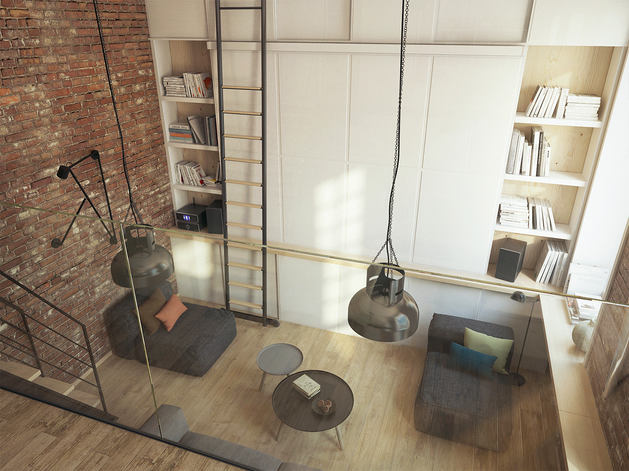
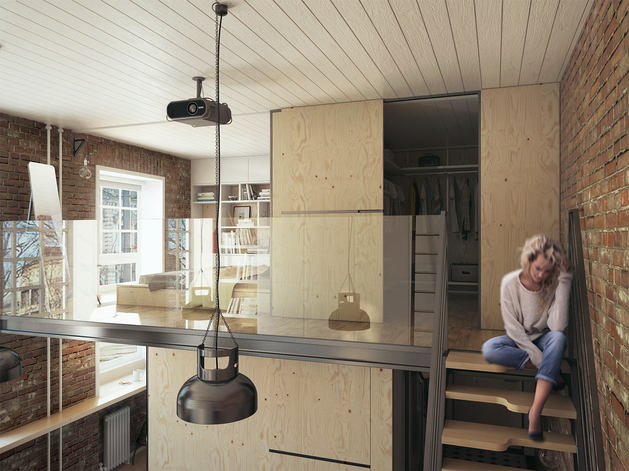
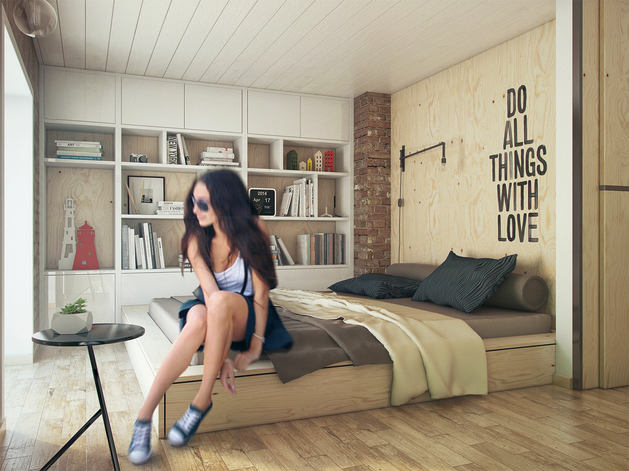
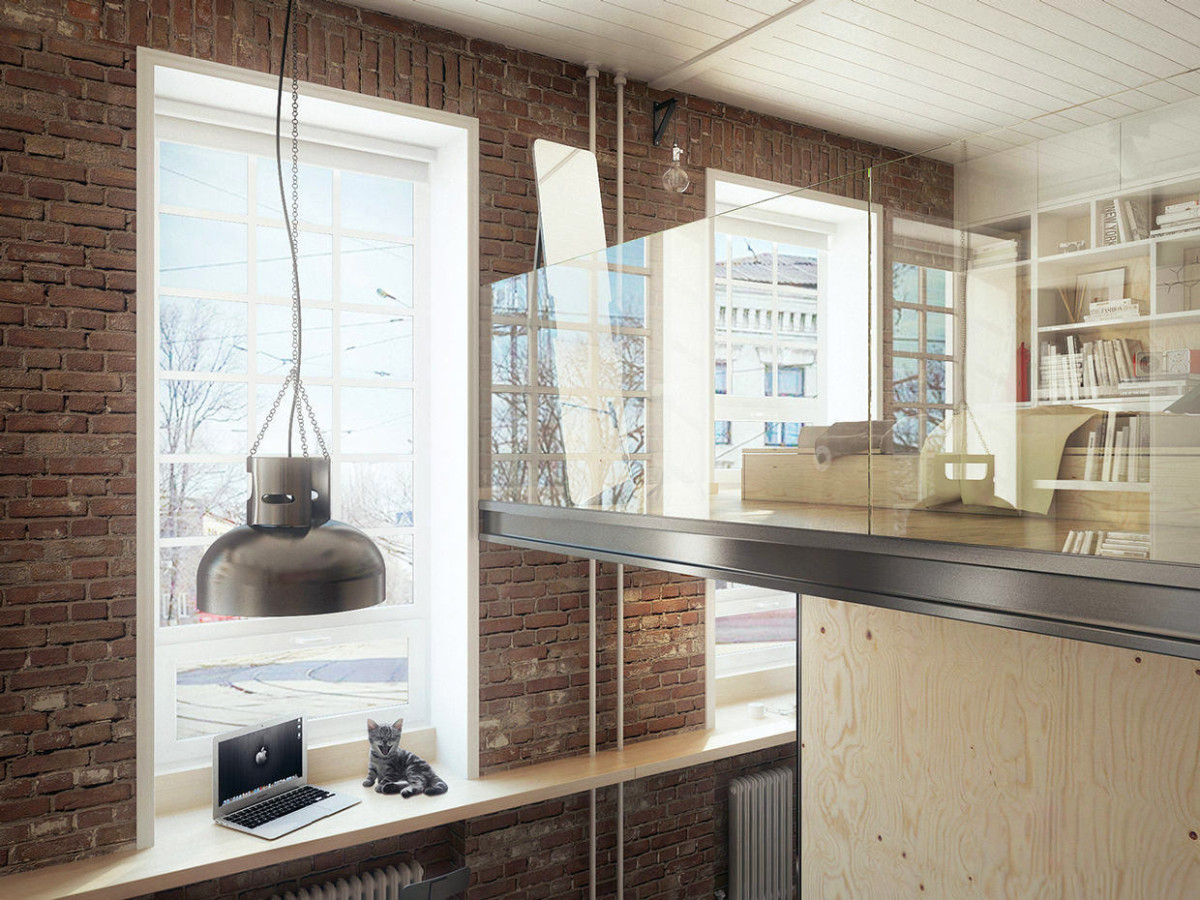
The main room is traditionally a living room, and in thisIn this case, it is rather a multifunctional lounge area: it is a dining room, a cinema room, and guest sleeping places - every centimeter of space is thought out in it. Based on the hospitality of the owners, the interior of the room was designed taking into account the possible accommodation of ten people. Space was saved due to the huge wardrobe, which occupies the entire western wall of the room from floor to ceiling and holds a lot of things.
The wardrobe is clearly zoned:The lower part is used as storage for a folding table and chairs, the central part is for pillows and bedding, and the upper and side sections are used to store other things. The cabinet is equipped with a stepladder on rollers, which provides access to any section and at any height. The white sliding panels of the central part of the cabinet also serve as an improvised canvas for watching movies using a hanging projector.
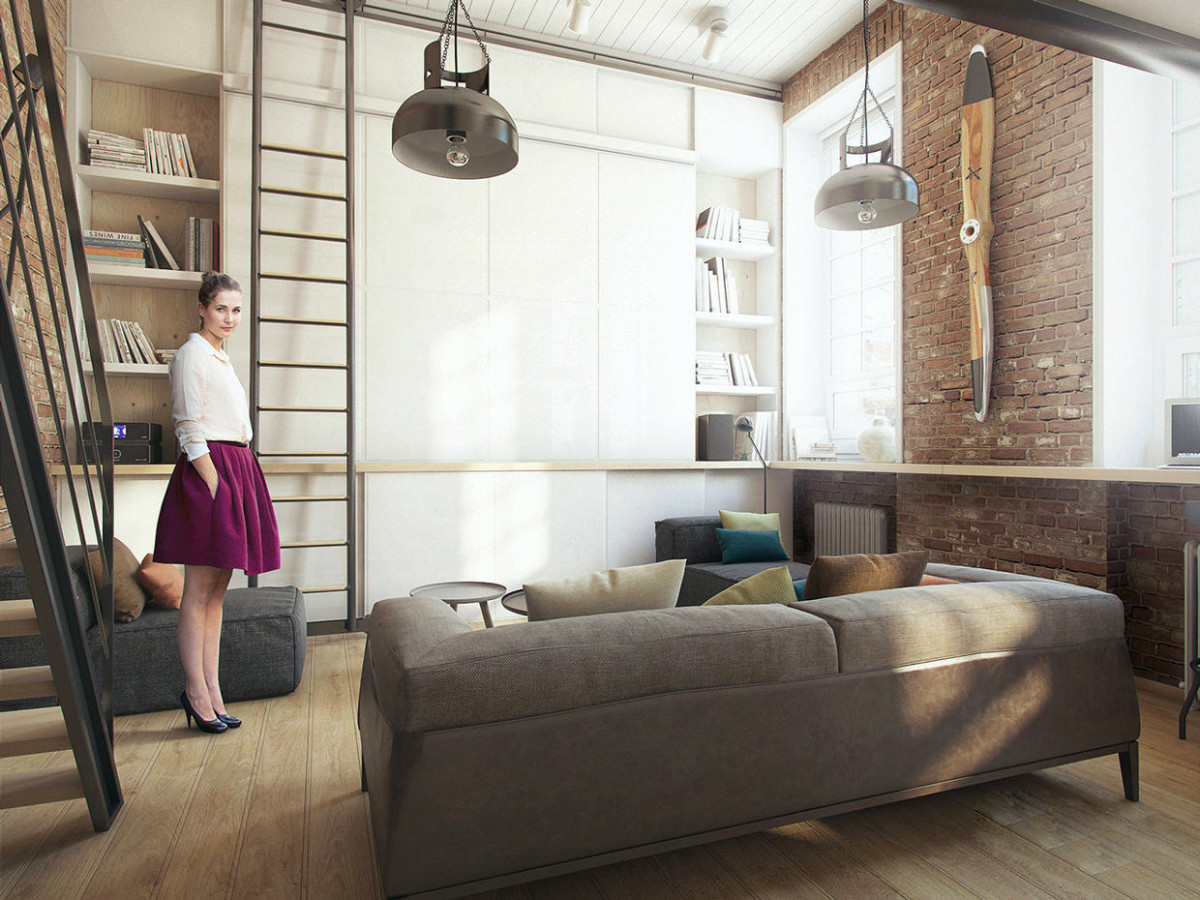
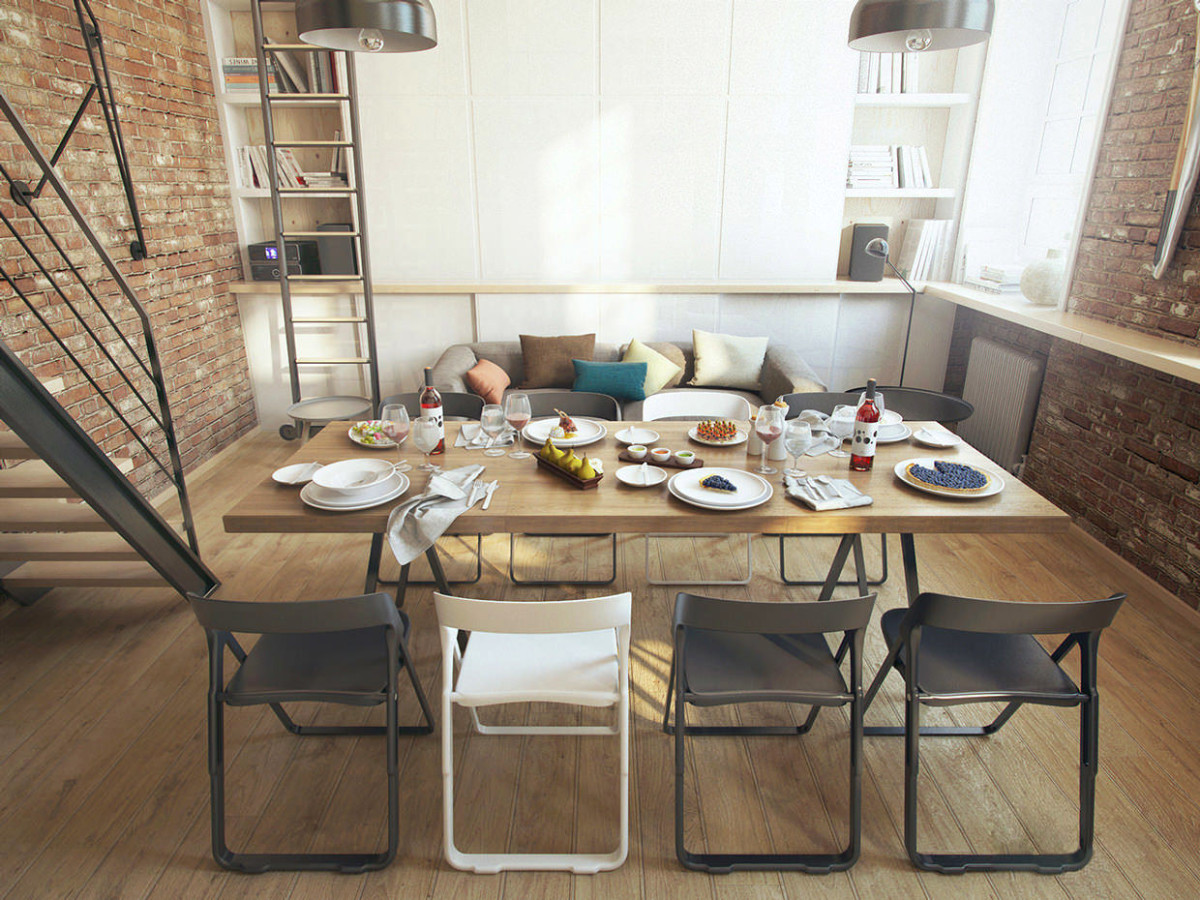
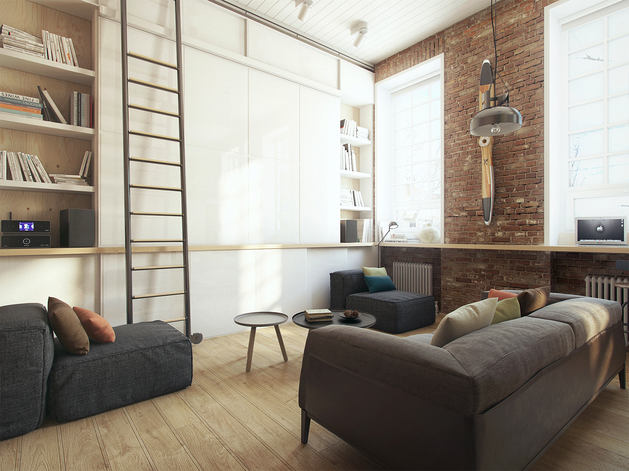
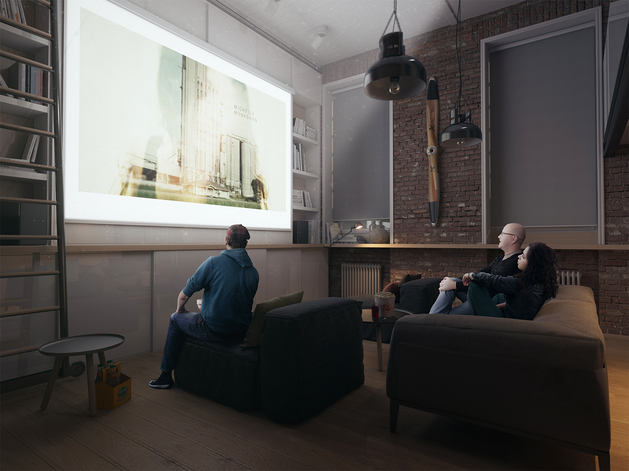
The "work desk" in the apartment is provided in the form ofcountertop-window sill the length of the entire wall. In the kitchen area, it serves its intended purpose as a small table for eating. The kitchen interior radiates the height of functional minimalism: hidden built-in appliances, a row of capacious drawers - everything you need, nothing extra.
Larisa Gusakova, the author of the project:
— All cabinet furniture, and there is more than enough of it in the projectenough, and some elements, such as the stairs, the window sill-tabletop, the doors - are custom-made and were developed for a specific project, they have a simple appearance, but hide a lot of interesting things inside.
The bathroom and shower are combined.A great design find was the brick partition between the kitchen and the bathroom. The white wall surface in the kitchen is actually a window from the bathroom with frosted glass. The sliding wooden screen behind the toilet serves as a kind of "hiding place" for household chemicals and bath accessories.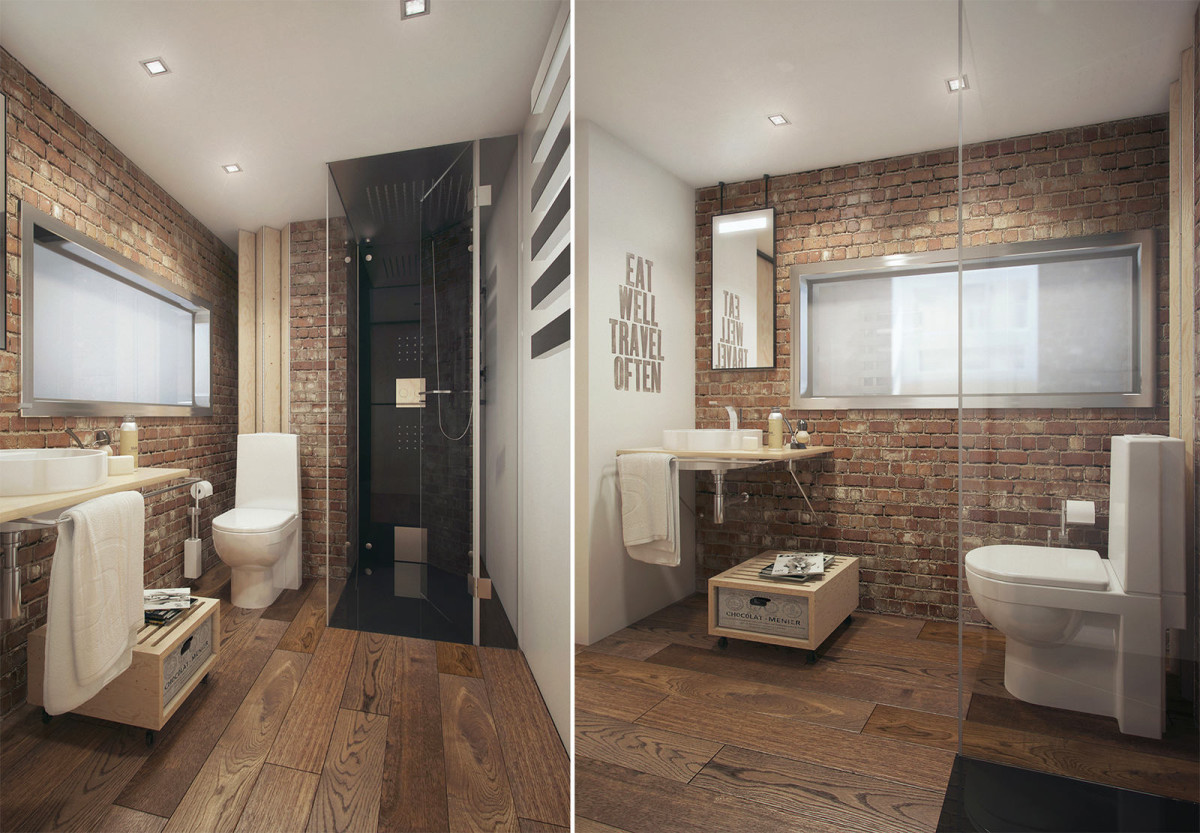
The furniture in the interior mainly consists ofnecessary items, but there are also decorative designs, such as a chest of drawers in the style of mailbox cells or a coat rack in the hallway, which is assembled from black water pipes. The industrial nature of the interior is visible not only in the functional furniture, but also in the few decorative elements and lighting.
This is also a hand-made all-wood airplane propellerworks, varnished and placed on the partition between windows; a graphite board, which is part of the wall in the kitchen and serves as an alternative to stickers on the refrigerator; ceiling lampshades made of aluminum. There is no painting as such in the interior; the alternative is calligraphy of motivating phrases, applied to the walls in different corners of the apartment.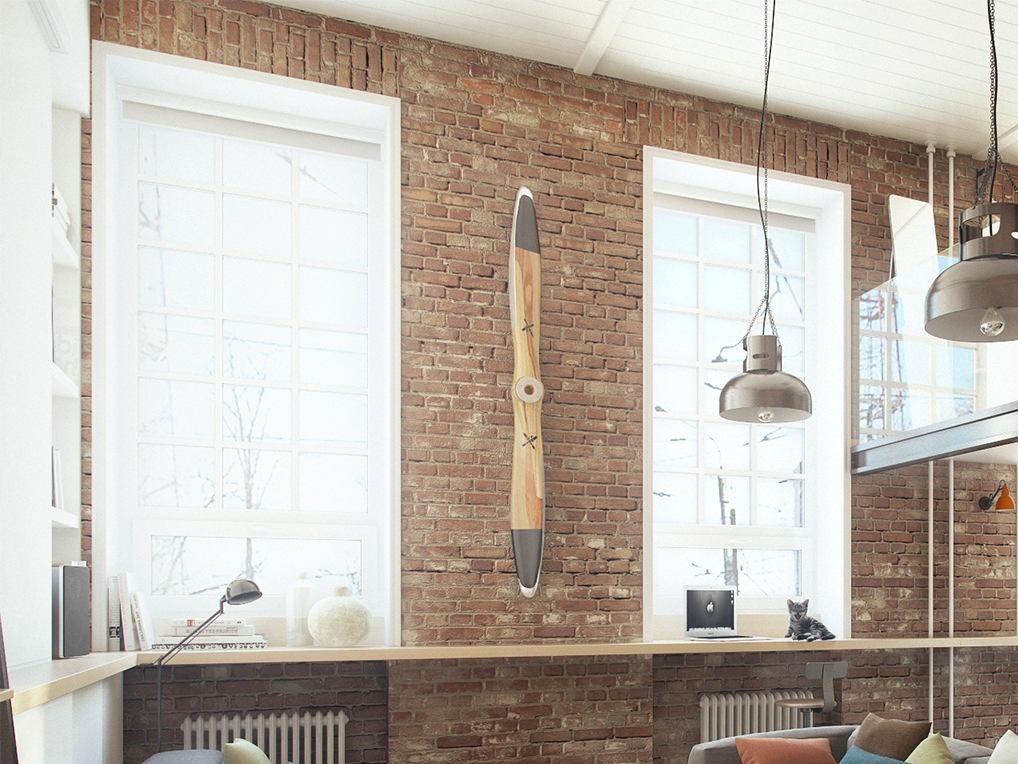
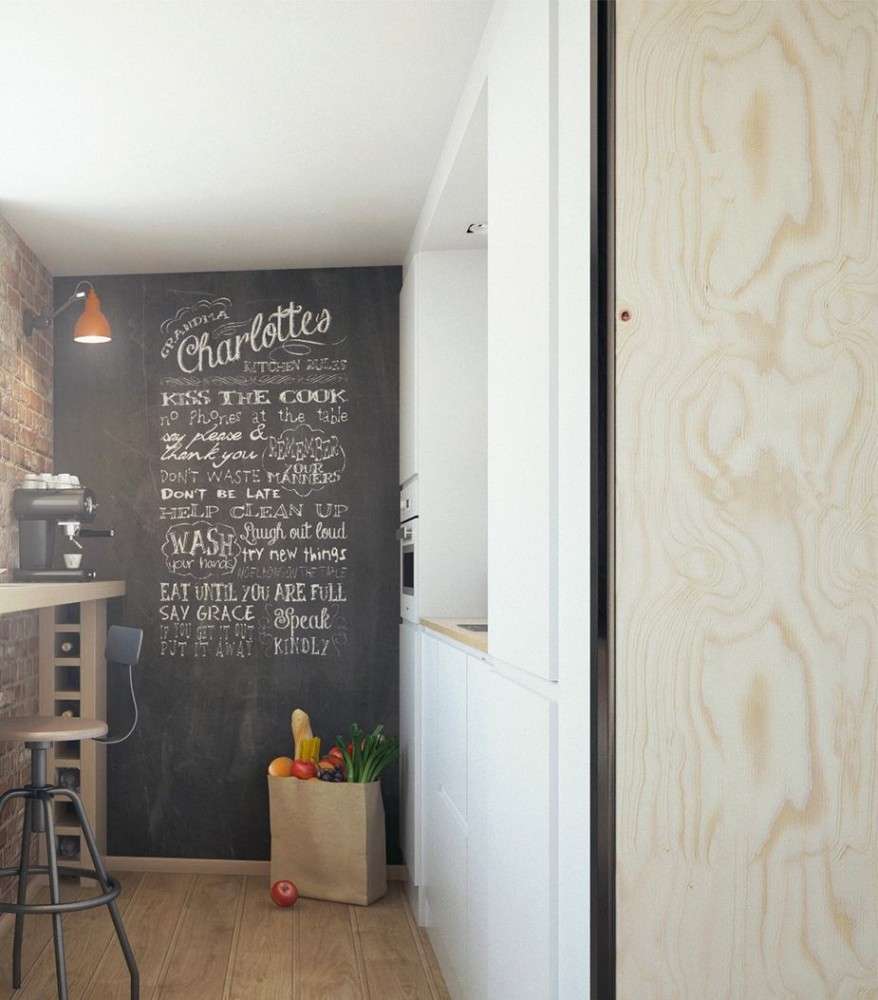
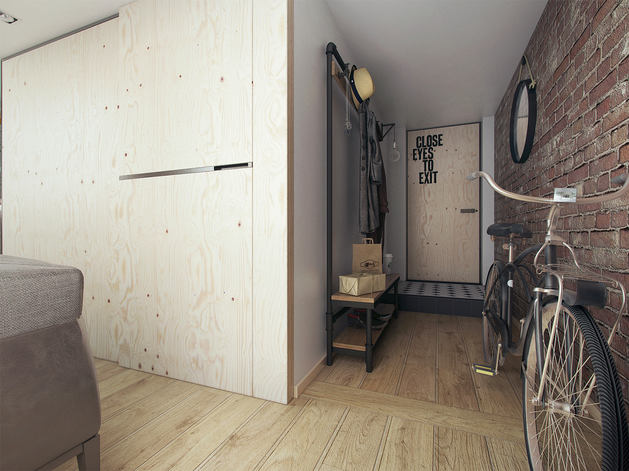
This completed project by the guys from The Goort is proof of how two young and talented people can become serious competitors for the “monsters” of the architectural business.
Alexander Gusakov, architect:
— The Goort at the moment is more like,a creative tandem of an architect (Alexander Gusakova) and an interior designer (Larisa Gusakova), rather than a design bureau in its traditional sense, with a separate office, many employees, etc. To be more precise, we decided to do independent projects under our own name in the summer of 2012.
The experience of working together at that time wasfor three years now, we met while working in the same design studio. We understood that we had common interests, similar principles in professional activities, and that working on joint projects was easy and interesting for us. This was enough to start thinking about our own practice. thegoort.com thegoort.com
